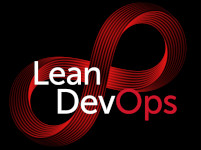
Cognitive Tunneling
Beware of heavy cognitive loading
Have you ever been carefully concentrating on a critical task yet still somehow missed some obvious yet unexpected event, piece of information, or coding bug that was right in front of you? Did the item later seem so obvious that, like a brightly colored clown riding by on a unicycle, you cannot fathom how you missed it?
Why does it happen? What sorts of problems can it cause, and how can we mitigate them?
The Process of Mental Load Shedding
While our brain is big and powerful, just like any system it can only handle so much at any given time. Fortunately for us, it has evolved many tricks that allow us to juggle and quickly act upon an impressive amount of detail to help us successfully navigate our ecosystem. I cover many of these shortcuts, along with their repercussions, in my book Lean DevOps.
Even with all these tricks, sometimes our brain still risks mental overloading. When this happens, we innately narrow our attention to only those details we believe are sufficiently important to achieve a given objective
This narrowing is what is known as cognitive tunneling.
In general, this action makes sense. It allows us to block out any distractions and deeply concentrate on the important task at hand. However, not all potential distractions are necessarily less important than, or even lack relevancy to, whatever we are focusing on.
Perception Blindness
One of the more common and troubling problems can can arise from cognitive tunneling is perception blindness. Perception blindness (also known as inattentional blindness) is an unexpected event that goes unnoticed despite being both obvious and fully visible to the individual.
There are many amusing studies about perception blindness out there that you can read about. My favorite, and one of the more famous, is the Invisible Gorilla. The issue with perception blindness is that it can happen to us anywhere at any time. We might be driving a car and not notice a car stopping or an animal running in front of us until it is too late to react.
Perception blindness is a constant scourge of DevOps teams. Service delivery ecosystems are, by their very nature, foll of work that constantly demands our focused attention. They are also brimming with dynamic and unexpected events, from unseen bugs silently mangling a service to customers changing their usage patterns in unhelpful ways.
Unfortunately, solving the perception blindness problem isn’t as simple as dutifully putting in place lots more instrumentation. In fact, doing so can cause you to suffer from another form of cognitive tunneling: change blindness.
Change Blindness
Change blindness is remaining unaware of an important, and often visible, change to a part or all of our ecosystem. Where it differs from perception blindness is that the lack of awareness of the change has less to do with it being unexpected. Instead, the brain ignores or tosses out the detail as too subtle or unimportant.
Service delivery ecosystems have all sorts of aspects steadily changing all the time. Sometimes load levels and response times might grow slowly. In microservice environments the number of service instances might increase. With each change we might be getting closer to encountering some dynamic we either hadn’t considered or not thought possible. The most common are unforeseen bottlenecks and race conditions. Not noticing the importance of these steady changes can not only prevent us from preemptively addressing them, but can also slow our ability to find and resolve any issues that do occur.
Cognitive Throttling
In order to to start on the path of minimizing the risks of cognitive tunneling we first need to find what is causing our brain to shed load in the first place. More often than not, these causes have little to do with deep concentration. In fact, more frequently we are victims of cognitive throttling.
Cognitive throttling happens all the time. We might be feeling stressed about work or some other aspect of our lives. We might be exhausted due to overwork or simply not getting enough quality rest. It is possible we are suffering from a combination of factors that individually do not seem like much but together consume enough mental bandwidth that we miss all sorts of important details going on around us.
As a manager, I actively scan for team members who seem stressed or overwhelmed. I know that the benefits from looking after someone’s well-being by allowing them to take time off and rest can often far outweigh any costs to the organization.
Sometimes, however, the problem is far larger than the exhaustion of one person. I often see organizations where unhealthy behaviors settle in. It might be a hero culture that steadily burns everyone out. Other times the problem is a lack of trust between team members or between teams and management.
Rebuilding Situational Awareness
The best way to minimize the risk of cognitive tunneling is to build in mechanisms that allow everyone on the team to regularly step back and look at the dynamics going on around them. I have put in place many such mechanisms, most of which I have put in my book. These include:
- the Queue Master, a rotating role that looks at the work hitting and moving through the team
- Workable daily stand-ups that focus more on communicating things people need to be aware of than to laundry list what work has been/is being performed
- Workable weekly reviews and retrospectives where patterns of problems encountered can be discussed, and where the team can put together a game plan to tackle
- Monthly to quarterly strategic reviews focused on tackling bigger and more strategic ideas to help the team
- Careful curation of communication channels to tune to cut the noise away from the signal
and most importantly:
- Remove or automate away repeat and mindless work.
Enabling the team to spot problems and help themselves help everyone.
